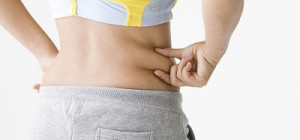 Aerobic exercising consists of a warm-up phase, a conditioning phase (when you actually do most of the exercising), and a cool-down phase. Exercising is stressful to our muscles, hence the warm-up phase where we stretch our muscles and get blood flowing into them to avoid tissue injury. The cool-down phase helps the muscles return to their resting level of activity; walking and/or light stretching after the conditioning phase will help prevent post exercise muscle cramping. The conditioning phase is further subcategorized for its intensity, duration, and frequency. Intensity is the level of effort you put into your workout, duration is the amount of time a single workout lasts, and frequency is how often you exercise. The currently recommended training frequency for maximal benefits from aerobic exercising is three to five times per week, with a duration of more than twenty continuous minutes. That is why exercises like golfing and howling are not particularly good aerobic exercises: we never go twenty minutes without stopping. And that’s why exercises like taking a long walk, jogging, swimming, and dancing are much more aerobically healthy.
Aerobic exercising consists of a warm-up phase, a conditioning phase (when you actually do most of the exercising), and a cool-down phase. Exercising is stressful to our muscles, hence the warm-up phase where we stretch our muscles and get blood flowing into them to avoid tissue injury. The cool-down phase helps the muscles return to their resting level of activity; walking and/or light stretching after the conditioning phase will help prevent post exercise muscle cramping. The conditioning phase is further subcategorized for its intensity, duration, and frequency. Intensity is the level of effort you put into your workout, duration is the amount of time a single workout lasts, and frequency is how often you exercise. The currently recommended training frequency for maximal benefits from aerobic exercising is three to five times per week, with a duration of more than twenty continuous minutes. That is why exercises like golfing and howling are not particularly good aerobic exercises: we never go twenty minutes without stopping. And that’s why exercises like taking a long walk, jogging, swimming, and dancing are much more aerobically healthy.
The Target Heart Rate
The most important factor in the conditioning phase of an aerobic-exercise program is the intensity of the exercise you do. To get maximum benefits for your long-term health, you need to increase your heart rate from its resting level to 50 to 80 percent of what is known as your functional capacity, or your “maximum heart rate” (MHR), for twenty minutes or more; this is your Target Heart Rate. You will know what your MHR is if you have had an exercise treadmill test done; if not, you can roughly estimate your MHR by subtracting your age from 220.
For many of you, it may be too cumbersome to try to take your pulse during a workout, so I suggest you purchase a heart-rate monitor, a simple device that measures your heart rate in a digital readout. These monitors can be purchased at almost any exercise or fitness stores, including places that sell bicycles. They can also be ordered from fitness magazines, like Runner’s World.
For those of you who are already thinking of excuses for not exercising, like the time-honored “I never have the time,” let me just say that walking even short distances is an excellent aerobic workout.
Start out by walking three times a week. Bring your heart monitor, or a watch with a second hand, to calculate how fast you have to walk and for how long to get your heart rate up into the lower part of your target heart range; it should only take a few days of experimenting to figure this out. Then you will be ready to stay in that range for at least twenty minutes. After a few weeks, increase both your duration and your intensity so you can bring your heart rate further up into your target range. Allow five to ten minutes to cool down after your walk.
Note: Be sure to wear comfortable clothing and to stretch before starting. In summer, walk early in the morning or late in the evening to avoid excess heat production.
This or any aerobic-exercise program can be summarized as progressive, with gradual increases in intensity and duration, and a goal of reaching an intensity of 70 percent of the target heart rate for thirty to forty-five minutes, three to four times a week. Your body will tell you if you are doing too much exercise; if aches and pains in your joints become a problem, cut back and, of course, if you experience any chest pains, see your physician immediately.
As a writer, health blogger and a self-proclaimed health nut, Karen Bates has long believed in natural diet supplements to help with weight loss. She has lost 27 lbs in 4 months from the best fat burners by Kaishon list and will never go back to the old self again. Her new diet plan has changed her life for good. Follow her and the many other diet and fitness authors on weightloss-hq facebook page.







